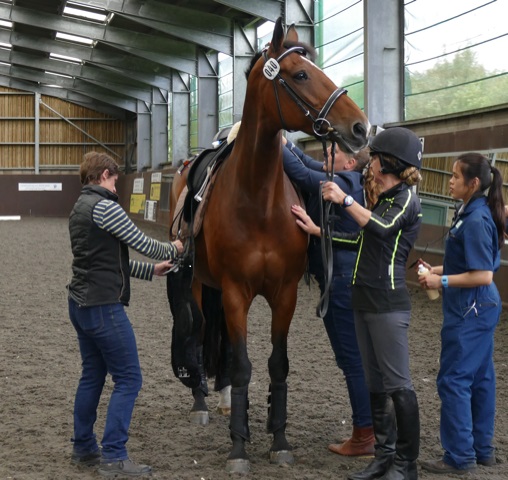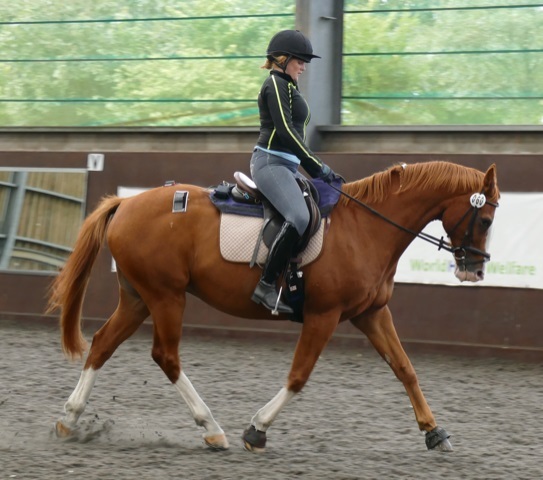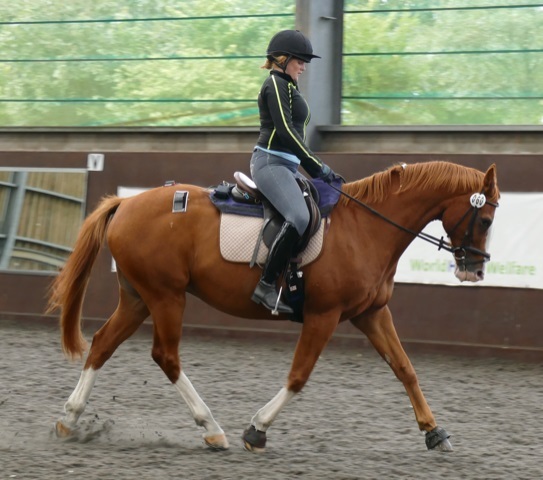Questions & Answers With Dr Sue Dyson
Why was the study needed?
Although it is intuitive that a rider who is too heavy for a horse may adversely affect its welfare, there are no scientific studies to support this under real-life conditions and no practical available guidelines for what is or is not too heavy. Previous studies have typically looked at the effect of deadweight, which is very different to a moving rider. The study also took into account that riders of differing size may ride a horse in the same saddle, which is not likely to fit all riders, therefore influencing their weight distribution.
Isn’t weight carrying capacity dictated by the size of the horse and the amount of bone it has?
It is a multifactorial issue; the length of the horse’s back dictates how long the saddle can be, which in turn dictates the size of the rider which can be accommodated, bearing in mind that the rider should be sitting in the middle of the saddle not on the cantle or overhanging the cantle.
The ‘amount of bone’, superficially assessed as the circumference of the cannon region just below the knee, has anecdotally been related to weight carrying capacity but there is no scientific evidence to support this. Horse 5 had a circumference (29cm), which was approximately 6cm greater than the other 5 horses (19-23cm), but the tests with the Heavy and Very Heavy riders were terminated for all horses.
Why is weight more influential than Body Mass Index (BMI)?
You can be obese without being unduly heavy. The effect on the horse is through weight and its distribution, which may also be influenced by height because of the way that height affects the rider’s position in the saddle. Bear in mind that force = mass (weight) x acceleration, so weight has a direct effect on forces exerted on the horse’s back via the saddle. This is why balance of the rider and their ability to sit straight are also important.
Are you suggesting that bigger riders need bigger horses?
Yes – plus properly fitting saddles that are appropriate for both the horse and the rider, although further work is needed to confirm that this will increase the weight that an individual horse can carry.
I am an average size and not overweight in terms of BMI so surely I don’t need to worry?
That depends entirely on the size of the horse. The current ‘average size’ is bigger than it used to be and a small horse may not be appropriate. Does the combination look right? If not, the rider is probably too big.
What are the implications in assessing weight carrying capacity for an overweight horse?
An overweight horse is already potentially compromised in its performance and potentially also in its health. When considering rider to horse bodyweight ratio we currently believe that we should be considering the weight of that horse when neither overweight nor underweight.
How did you assess lameness and discomfort?
Lameness was assessed subjectively by an orthopaedic veterinary specialist and objectively using inertial measurement units, which were mounted on the poll, withers and pelvis. Discomfort during ridden exercise was also assessed by applying an ethogram for ridden horses – which is a description of a variety of behaviours which we have shown may be indicators of musculoskeletal pain.
Can people be trained to use the ethogram to identify discomfort?
I believe so. It requires careful observation and learning to look at several things at once, bearing in mind that features such as isolated tail swishing are not of significance.
 |
| Preparing one of the horses |
Were you concerned that some of the horses became temporarily lame?
I had expected this, based on previous clinical observations over the years. I have seen many horses ridden sequentially by people of very different weights and seen an immediate change in the way the horses moved. I have previous evidence of horses in full work with no underlying clinical problem showing transient lameness when ridden by a heavy rider. Horses with low-grade lameness when ridden by a lightweight rider may show much more obvious lameness when ridden by a heavier rider.
The lameness was temporary, because it was a direct effect of the weight of the rider. It had resolved within 45 minutes and all horses moved at the end of the study as well or better than they did at the start when ridden by the light or moderate riders. However if a rider of similar weight to the test rider rode the horse regularly then lameness may become a permanent feature.
Why did you include the very heavy rider?
There are many heavy riders riding – we need to demonstrate what effect they may have. We had no idea whether, under the circumstances of this study, the threshold was going to be between moderate and heavy or heavy and very heavy.
Was the tack checked for each horse?
A Master Saddle Fitter Consultant checked all the tack before the project, the day before the study and every day of the study.
Would it have been preferable if all the saddles had fitted perfectly?
In the ideal world yes, but we know based on a previous study that > 50% of 506 horses in normal work had ill-fitting saddles; approximately 34% of horses I investigate on a weekly basis have ill-fitting saddles, so we need to know if a heavy rider accentuates any ill effects of a poorly-fitting saddle. It is also very unlikely that a single saddle on one horse could have fitted all 4 riders. This mimics what happens in the real world, e.g., a show pony being ridden in by an adult rider.
How much do you think tweaking saddle fit using pads and numnahs can cause problems?
Pads or numnahs may possibly provide a short-term fix for a saddle that does not fit properly. However, they should not be regarded as long-term solutions. A well-fitting saddle is essential.
When the horses were returned to the owners did you advise the owners of any tack not being an ideal fit?
All the owners were informed of the problems identified and we know that several sought further professional advice.
So what is the ideal ratio?
This is not a straightforward question to answer because it depends on so many factors including the conformation, fitness and strength of the horse, the presence of any subclinical problems or overt clinical problems, the fit and suitability of the saddle, the ability of the rider, their balance and symmetry, their fitness and the type, duration and intensity of work and the footing and the terrain.
Our study indicated that problems were apparent under these conditions (30 minutes flat work) with our heavy rider (on average 16.7% rider:horse bodyweight ratio), with saddles that did not fit the riders. This does not mean that this is a reliable cut-off ratio. We need to consider whether the combination of horse and rider are appropriate, regardless of weight and BMI. Is the horse’s back of long enough length to accommodate a saddle long enough for the rider so that they can sit in the centre of the saddle?
It is possible that with a longer saddle, enabling the rider’s bodyweight to be better distributed, assuming that the horse’s back is long enough to accommodate this, the ratio could be considerably higher. More work is needed to confirm the factors that influence the weight an individual horse can carry.
This is a pilot study and further research is needed in order to work towards the goal of producing guidelines. We have a project proposal and are currently actively looking for sponsors.
What can we do in the short term to identify and address the potential problem of a rider being too big for a horse?
Does the picture look appropriate? If the rider looks too big for the horse they probably are. Look at the position of the rider in the saddle. Is the rider sitting in the middle of the saddle or on the cantle or over the cantle? If the rider is not in the middle the saddle is too small for the rider – but could the horse’s length of back accommodate a longer saddle? Are the shoulder, hip and heel in alignment? If not, is it the fit of the saddle for the rider that prevents this or lack of rider coordination? Have the saddle checked regularly for fit to both the horse and rider. A fit horse is more likely to be able to cope with a larger rider than an unfit horse. Likewise the rider should be as fit as possible. The horse should not be allowed to gain weight in order to reduce the rider: horse bodyweight ratio. A fat horse is less able to work efficiently than a horse of appropriate weight.
What will the next phase of the study look at and when is this going to happen?
Next steps – further results will be published and more information will be presented at the International Saddle Research Trust 3rd Conference on December 8th at Nottingham University – open to all – more information available from www.saddleresearchtrust.com.
We hope to acquire additional funding to investigate further the effect of rider weight, looking specifically at heavy riders of similar ability and weight, but varying in height on four horses of variable bodyweight. Saddle fit for the horse will be ideal. In a crossover design we will also try to find an ideal fit of saddle for the rider. Assuming that funding can be secured, we would hope to perform the study in the summer of 2019.












